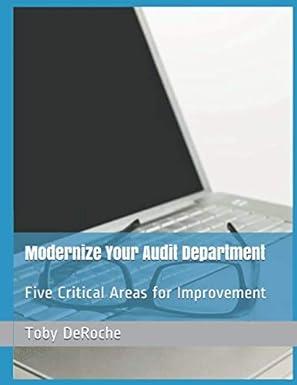Answered step by step
Verified Expert Solution
Question
1 Approved Answer
What red flags did the auditors miss in the Parmalat case? Please be specific. Something Went Sour at Parmalat There was much confusion when Italian



What red flags did the auditors miss in the Parmalat case? Please be specific.
Something Went Sour at Parmalat There was much confusion when Italian dairy food giant Parmalat defaulted on a $187 million bond payment in mid-November 2002. Default on a bond payment seemed difficult to bel considering that a Parmalat subsidiary in the Cayman Islands had a $4.9 billion cash balance in Bank of America account. The problem was that the cash account did not exist. PROBLEM Subsequent investigation revealed that, over a 15 year period, Parmalat's management had fal sified accounts and created assets to hide losses of $10 billion from Parmalat's Latin American operations. Other allegations charged that Parmalat's management had lied about repurchasing $3.6 billion in bonds, which they had never done. By hiding losses and increasing assets on its bal ance sheet, Parmalat was able to continue to borrow enough money from investors and creditors to conceal and perpetuate the massive fraud AUDIT APPROACH From 1990 to 1999, the Italian branch of Grant Thornton audited Parmalat. Under Italian law, how ever, Parmalat was forced to change auditors periodically and chose the Italian branch of Deloitte Touche Tohmatsu (Deloitte & Touche SpA) to be the company's new auditor in 2000. Grant Thorm ton, however, continued to audit Parmalat's offshore subsidiaries located in the Cayman Islands, first inquired about the Cayman Islands account in December 2002 and The new auditors received a letter on Bank of America letterhead in March 2003, confirming the existence of the account. The letter, however, was a forgery, created in Parmalat's headquarters. Nevertheless, the $4.9 billion was listed on the subsidiary's balance sheet as of December 31 dated into Parmalat's balance sheets dated December 31. 2002, and June 30, 2003 , 2002, and was consoli The auditors missed several red flags. First, the size of the account, on its own, should have been a red flag. It is very unusual for a large company to have so much cash in a single bank account. In addition, between January 2000 and September 2003, Parmalat raised more than $5 billion in debt offerings. With so much cash available in the Cayman Islands, why was Parmalat continuing to borrow money? Second, the communication received from the Bank of America was in the form of a fax (see Parmalat Exhibit 1), which raises two issues. First, a fax transmission is not subject to the same level of control as returning an original confirmation. Essentially, a fax can be sent from almost anywhere, and the originating phone number can be falsified by simply changing the phone num- mitting fax machine. A mailed confirmation, however, passes through eral mail system and is postmarked with the originating zip code. Also, this particular fax smudged, raising more suspicions. Forgers routinely "age" their copying them to ob should have followed up directly with the bank "originals" by repeatedly photo- scure any telltale photocopying lines. Given these circumstances, the auditors Third, when such large balances represent a significant portion of a company's balance sheet (in this case, 38 percent of Parmalat's assets were in the subsidiary's bank account), auditors should take additional care to obtain further corroboration. All told, the combination of a larg bank account and a questionable form of confirmation should have provided Deloitte & Touche SpA with sufficient warning to dig deeper DISCOVERY Parmalat management also told Deloitte& Touche SpA that the company had a S6 investment in an open-ended mutual fund that it could access at any time. T was unsuccessful in its attempts t management's claims, Deloitte & Touche SpA included a qualification in its a highlighting the lack of e s to retrieve the funds. Because no evidence was available to s company, however dit re vidence and alerted regulators of suspicions of a larger fraud view rep ort Initial investigation revealed that massive were missing or nonexistent. Parmalat and its subsidiaries filed for bankruptcy protection on December 27, 2003. amounts (estimates as high as $19 bil lion) of asselsStep by Step Solution
There are 3 Steps involved in it
Step: 1

Get Instant Access to Expert-Tailored Solutions
See step-by-step solutions with expert insights and AI powered tools for academic success
Step: 2

Step: 3

Ace Your Homework with AI
Get the answers you need in no time with our AI-driven, step-by-step assistance
Get Started


